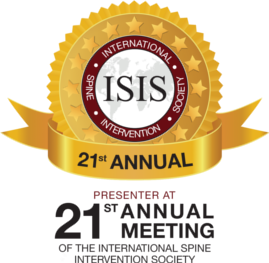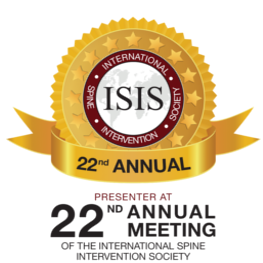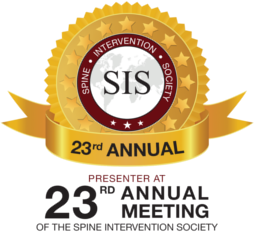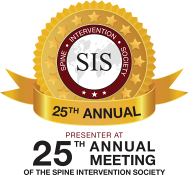Spine surgery is used to correct herniated discs, spinal stenosis, scoliosis, or spinal fusion. After the procedure, you require significant recovery time and effort. Most surgeons have adopted minimally invasive surgical techniques.
With these techniques, surgeons make small incisions through which they can insert cameras to check and treat patients’ spinal conditions. A minimally invasive surgical technique reduces the size of the wound and speeds up the healing process.
The healing rate depends on the surgery type, overall health, and commitment to recovery. Before leaving the hospital, your neuro-interventional surgeon can give you some tips to speed up the healing. Seeking an experienced surgeon's services can help prevent complications and promote healing.
You can have a smooth healing after spine surgery by following these tips:
Follow Your Surgeon's Instructions on Wound Care
Following your surgeon’s instructions is crucial to a successful recovery from spine surgery. Each spine surgery is unique. Therefore, your surgeon will give you instructions designed specifically for your case. These instructions will cover post-surgery pain management and wound care:
- Wound care. Many surgeons have adopted the minimally invasive spine surgery technique. However, the surgeon will make small incisions through your skin and the affected area. Proper care of the incision site will help prevent infection. You should follow the prescribed steps for cleaning the area and dressing changes.
- Medication. Your doctor can prescribe pain medications and antibiotics to prevent infection. You should take medications as prescribed to manage pain and prevent complications.
- Activity restrictions. Before wound recovery, you should adhere to movement and lifting restrictions. You should avoid bending, twisting, or lifting heavy objects for several weeks after surgery.
When you adhere to your surgeon’s instructions, you maximize your chances for a successful recovery.
Control Pain and Swelling
Pain and swelling are common after spine surgery. However, managing these symptoms can improve your recovery experience. Adequate pain control will allow you to stay more active and reduce discomfort. You can manage your pain after the surgery through the following:
- Ice and heat. A few hours after surgery, you can use ice packs to reduce swelling. After the initial swelling diminishes, you can use heat packs to relieve pain by relaxing your muscles.
- Medications. Your surgeon can prescribe pain medications after your surgery. You should follow your prescribed medication schedule after the surgery. Even when your pain is persistent, you should avoid taking more than the prescribed dosage. This will help to prevent complications, masking potential issues and dependency on painkillers.
- Alternative therapies. You can manage your pain and discomfort through alternative therapies. Your surgeon can recommend acupuncture or physical therapy.
Pain control helps maintain good mental health during the recovery period. Therefore, you should work with your healthcare team to find your best plan.
Prioritize Rest and Sleep
Adequate rest and sleep are essential for your body’s healing. Your body will need time to recover from post-surgery fatigue and rebuild tissue. Giving yourself time to rest helps heal your spine and strengthens your immune system. You should incorporate the following aspects during your recovery:
- Comfortable sleep position. Sleeping positions are critical in spine healing. After surgery, your surgeon may recommend sleeping on your back with a pillow under your knees. Alternatively, you can sleep on your side with a pillow between your legs to keep the spine aligned.
- Create a good environment. For smooth recovery, you should have a quiet and comfortable sleeping environment. Keep the temperature cool, and ensure that your mattress and pillows provide adequate support for your healing back.
- Avoid disrupting your sleep cycle. Establish a consistent sleep routine as you recover from spine surgery. Restful sleep reduces inflammation and supports tissue regeneration.
Allow your body the time it needs to recover fully through rest. Additionally, avoid returning to physical activity too early.
Stay Active Within Limits
Resting is crucial while you recover from spine surgery. However, you must start moving your body when your surgeon allows it. Gentle movements and physical activity help maintain circulation and strengthen your muscles. Your surgeon will recommend that you find a balance between rest and movement.
- Physical Therapy. Your doctor may recommend physical therapy as part of your recovery from spine surgery. A physical therapist will guide you through exercises and stretches that can help with mobility. Attending physical therapy sessions will help you recover faster and more effectively.
- Walking. Walking is the most recommended low-impact exercise post-surgery. After receiving a clearance from your doctor, you can start taking short walks and increase your walking time. Walking promotes blood circulation and supports the healing process.
- Avoid high-impact activities. For the first few weeks after surgery, you must avoid strenuous activities. These activities can place unnecessary stress on the healing spine and cause complications.
Before engaging in new activities, you must consult with your healthcare provider.
Ensure Proper Nutrition and Hydration
Your body will require proper nutrition for a smooth recovery from spine surgery, promote healing, and reduce inflammation. Your body needs specific nutrients to repair tissue and strengthen bones. The following are essential dietary considerations during recovery:
Protein
Protein is an essential nutrient for tissue repair. The body uses protein to rebuild damaged tissues and support the healing of surgical wounds. You should aim for lean protein sources like:
- chicken
- fish,
- eggs
- legumes
Ensuring that you add some protein to each meal helps maintain muscle mass.
Calcium and Vitamin D
Calcium and vitamin D support bone health. The health of your bones is an essential aspect of spinal recovery. Spine surgery may involve a bone graft. Therefore, adequate calcium and vitamin D intake can speed up the process and prevent complications.
Vitamin D helps the body absorb calcium. If you cannot obtain the necessary vitamin D through food, consider supplementation.
Anti-Inflammatory Foods
Inflammation is a common complication after spine surgery. Foods rich in omega-3 can help reduce inflammation. Familiar sources of omega-3 include fatty fish and supplements. Additionally, antioxidants found in fruits and vegetables can promote healing by reducing oxidative stress.
Fiber
Pain medications prescribed during recovery can cause constipation. You can promote your digestive health by maintaining a high-fiber diet. Sources of fiber include whole grains, fruits, vegetables, and legumes. Drinking plenty of water can also prevent constipation.
Take Plenty of Water
Staying hydrated is vital for health and healing. Water helps transport nutrients and lubricate your joints. Drinking enough water is essential when recovering from surgery.
Supplements
Your doctor might occasionally suggest supplements to aid in your recovery. Supplements containing vitamin C and magnesium may help heal following spine surgery. You should always contact your healthcare practitioner before starting any new supplements.
Practice Good Posture
Posture is how you hold your body while standing, sitting, or lying down. After spine surgery, you must maintain a neutral spine position. It keeps the spine's natural curves in alignment and minimizes stress on the vertebrae, discs, and surrounding muscles.
- Standing Posture. When standing, distribute your weight evenly on both feet. Additionally, keep your feet shoulder-width apart and avoid locking your knees. Avoid slumping or leaning forward, as this can strain your lower back and affect your recovery.
- Sitting posture. Maintaining a good sitting posture is essential for spinal recovery. When sitting, you should ensure that the chair fully supports your back. Use a cushion to support the natural curve of your lower back. You should also avoid slouching or leaning forward, which creates unnecessary pressure on your spine. Try taking breaks and changing positions if you must sit for extended periods.
- Sleeping posture. Good sleep aids recovery following spine surgery. You should attempt to sleep on your back with a pillow beneath your knees to preserve the lower back's natural curve. You can also sleep on your side with a pillow between your knees to relieve pressure on your spine. Sleeping on your stomach might cause needless strain and spinal misalignment.
Take Care of Your Mental Health
Recovering from spine surgery takes more than physical healing. Recovering from such a complicated procedure will require mental and emotional resilience. The thought of undergoing spinal cord surgery is nerve-wracking for many patients.
Fear of potential complications can affect your mental well-being. Many patients feel frustrated and anxious during the healing process. Your mental health is as important as your physical health during your recovery journey. You can ensure a smooth healing process by:
- Setting realistic expectations. You should understand that recovery from spine surgery can take time. Therefore, you must set achievable goals for yourself and celebrate progress along the way. Setting unrealistic expectations can cause frustration, affecting your healing journey.
- Staying connected. During recovery, you should stay connected with friends and family. Social interaction can help reduce feelings of isolation or depression.
- Consider professional support. If your healing process significantly impacts your mental health, you should consider professional help. You can do this by consulting a counselor or psychologist or joining a support group for surgery patients.
Maintaining a positive outlook and having a support system can improve your recovery experience.
Gradual Reintroduction of Normal Activities
Your surgeon can recommend rest after your surgery. Resting allows your body to heal and prevents straining the surgical site. However, you will want to return to your daily activities when you start feeling better. You can ensure that your healing process is smooth by reintroducing the activities gradually. The considerations you must make during the reintroduction of activity include:
- Avoid overexertion. Do not jump back into your usual physical activities too soon. Additionally, consider your limits and listen to your body. Overexertion could delay recovery or cause additional issues.
- Returning to work. Depending on the nature of your job, you can return to work after a few weeks or months. However, consider working part-time or flexible hours before returning to your routine.
- Reintroducing hobbies. When your surgeon clears you, you can re-engage in less strenuous hobbies. However, you should avoid excessive bending and lifting until you fully recover the spinal cord.
- Exercise. If you wrk out routinely, you may need to stop after the spine surgery. However, after a while, you can return to your exercise. Your surgeon may recommend that you seek physical therapy. Ypour physical therapist will guide you on proper exercises depending on your recovery journey.
Rebuilding your strength and stamina after spinal cord surgery is gradual. Therefore, you must pace yourself to ensure your long-term recovery.
Stay Consistent with Your Follow-up Appointments
Your doctor's visits should not end after your spine surgery. Attending the scheduled follow-up appointments with your surgeon is crucial for monitoring your recovery. These appointments allow your doctor to evaluate your healing progress. Additionally, they can detect signs of complications that you may have missed. During your follow-up appointment, your doctor can order an X-ray or scan.
These imaging tests help assess the status of your spinal cord. Besides, they help check the healing of your discs, bones, or implants. If your doctor recommends physical therapy for recovery, they will check your progress.
Recognize and Address the Symptoms of Complications
When you seek the services of a competent spine surgeon, you are likely to have a smooth recovery. However, like other surgical procedures, spine surgery can have various complications. Recognizing the symptoms of complications and seeking immediate medical care can help smooth your healing process and ensure a good outcome. Common symptoms of complications you should look out for after a spine surgery include:
Severe or Persistent Pain
Mild to moderate pain after spine surgery is normal. However, severe or escalating pain may signify a complication. The pain of spine surgery complications differs from the discomfort experienced immediately after surgery. Persistent pain after spine surgery can indicate nerve injury or infection. If you experience this pain, you must seek immediate medical attention.
Loss of Sensation
A loss of sensation or numbness in the legs, arms, or back can indicate nerve damage. Sometimes, the nerves are compressed by swelling, hematoma, or improper positioning during surgery. Numbness or tingling sensations may also occur due to nerve irritation. If left untreated, you could suffer permanent neurological damage. Additionally, it will impact your overall recovery from the surgery.
Weakness of the Limbs
Your doctor can recommend spine surgery if you experience limb weakness and other symptoms. Loss of limb strength after the procedure is a sign of nerve injury or spinal cord damage. If the weakness in your arms and legs persists or worsens after the surgery, you will require an emergency evaluation.
Partial paralysis can occur due to nerve compression, bleeding, or infection. Early intervention is critical for minimizing long-term damage and ensuring proper recovery.
Infection
Infection after spine surgery can slow down healing and affect the outcome of the surgery. Signs of infection can include fever, chills, redness, pain, or pus drainage. Infections can occur deep within the spine or at the wound's surface. When left untreated, an infection can also lead to sepsis, a life-threatening condition.
Difficulty Breathing and Chest Pain
Difficulty breathing or chest pain after spine surgery are signs of a more serious issue like a blood clot. These conditions can arise after surgery, especially if you remain dormant during recovery. A blood clot can travel to the heart, causing sudden death. You should seek emergency medical care if you experience difficulties breathing.
Bladder or Bowel Dysfunction
An inability to control bladder or bowel movements is an alarming symptom after spine surgery. It can indicate damage to the nerves that control these functions. These symptoms are more concerning if they appear suddenly. Sometimes, surgical intervention is necessary to correct the injury and prevent permanent damage.
Swelling of the Incision Site
Excessive swelling around the incision site or in the back can indicate the formation of a hematoma. A hematoma can pressure nerves and tissues, leading to further complications. After your spine surgery, you must monitor the surgical site. You should notify the surgeon if you experience significant swelling.
Fever or Unexplained Illness
A low-grade fever is common after surgery. However, you must seek immediate medical care if you experience a fever that persists. High fever is often a result of a spinal cord infection or an infection on the incision site. When you consult your doctor, they can administer antibiotics to fight the infection and speed up your recovery.
Find a Competent Spine Surgeon Near Me
Doctors recommend spine surgery for patients with various spine disorders like herniated discs, spondylolysis, and spinal stenosis. The desired outcome of spine surgery is pain relief and a smooth return to normal life activities. The healing process for your spine surgery will affect the result significantly.
Recovering from spine surgery requires patience, proper care, and dedication. You will have a smooth healing process if you focus on pain management, follow through with rehabilitation, and maintain a balanced diet. Additionally, you must nurture your emotional well-being and adopt long-term spinal health habits.
Like other surgical procedures, there is a risk of complications after spine surgery. You can speed up your healing by addressing the symptoms of complications. Consult a reliable spine surgeon if you have a spinal cord condition requiring surgery. At LAMIS, we offer expert spine surgery services for our Los Angeles, CA patients. Contact us at 310-734-6088 to schedule an appointment.






